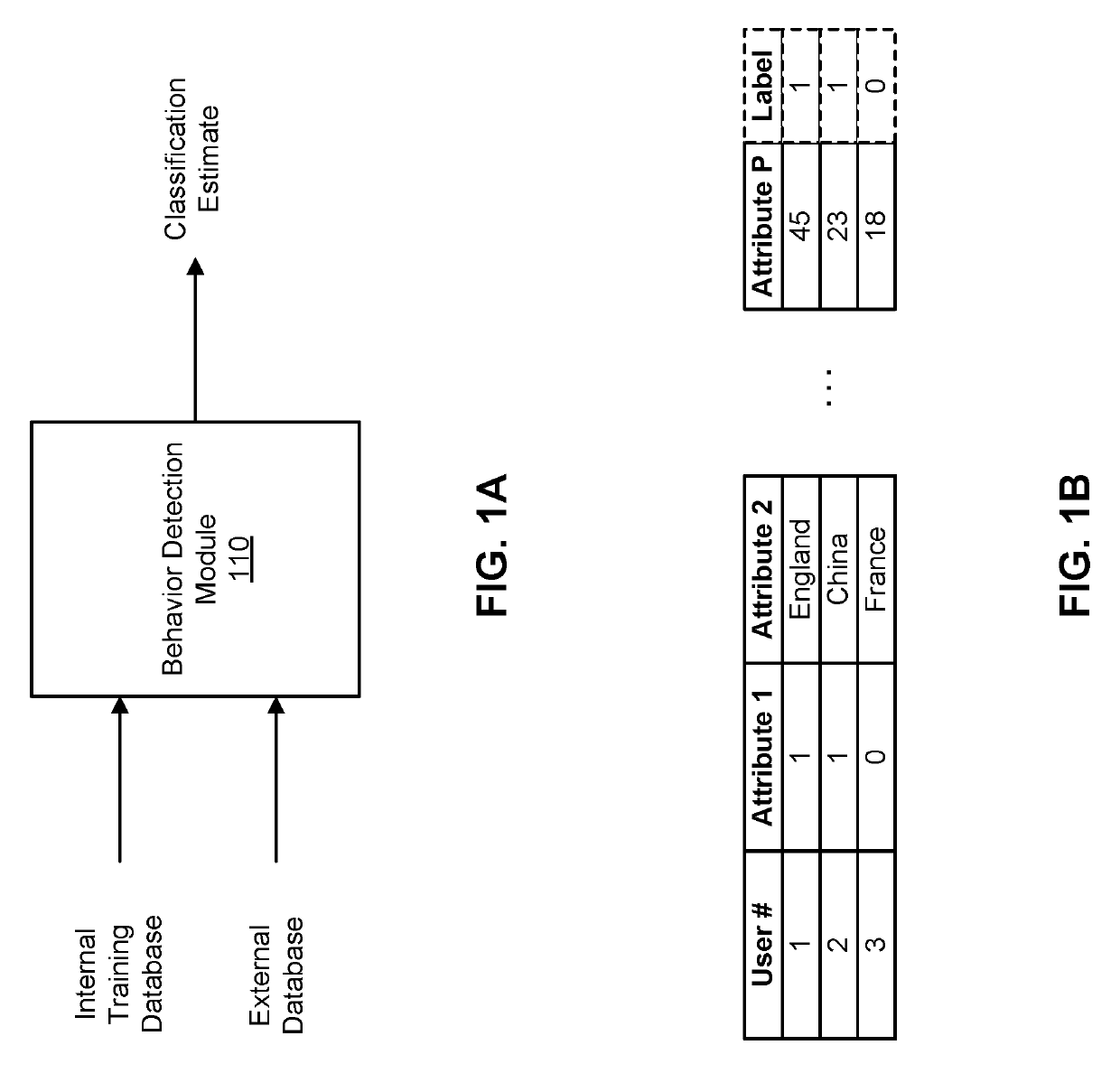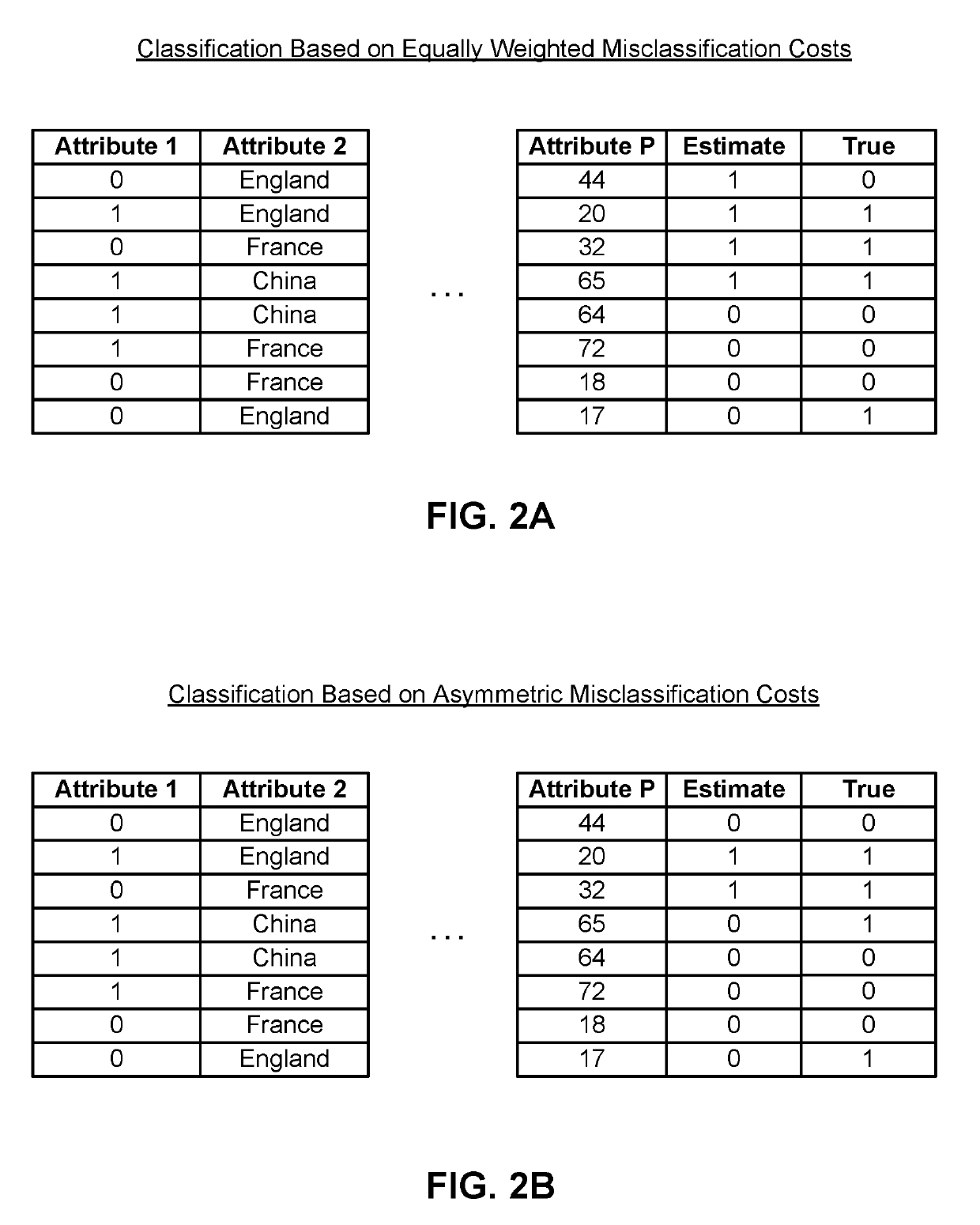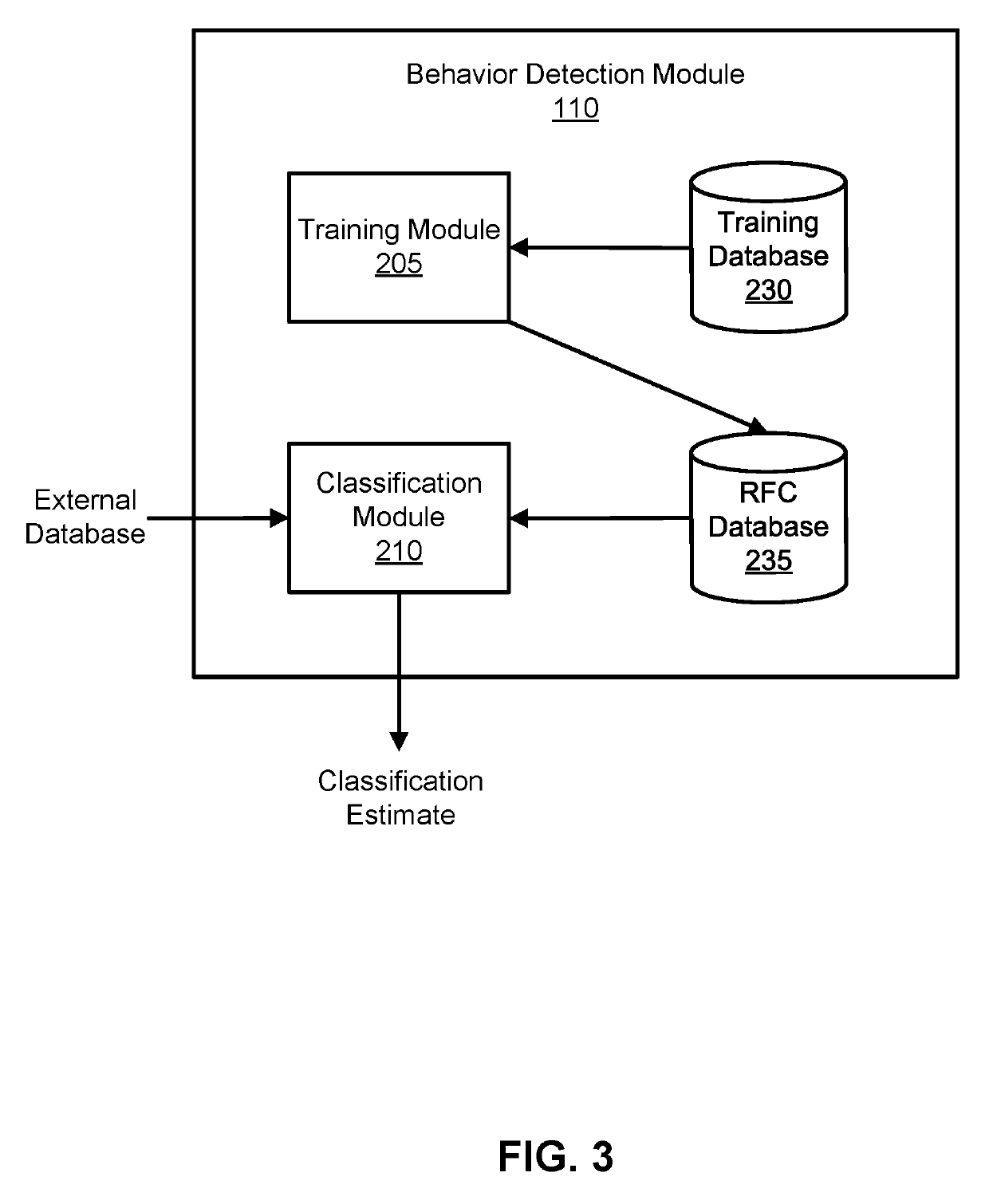Classification for Asymmetric Error Costs
a technology of asymmetric error cost and classification, applied in the field of classification of database entries, can solve the problems of user inconvenience of moving the message, user missing an important piece of communication, and high misclassification cost, so as to increase the error of the other label, and reduce the error of a label
- Summary
- Abstract
- Description
- Claims
- Application Information
AI Technical Summary
Benefits of technology
Problems solved by technology
Method used
Image
Examples
example use case
Fraud Example Use Case
[0049]The behavior detection module 110 may be used in the context of user fraud, in which a classifier is used to determine whether a user of a computing system is fraudulent or not. For example, in a website where users generate financial transactions between each other in exchange for products and services, fraud may occur in the form of identity theft, in which a fraudulent user inappropriately accesses another user's account information, rental fraud, in which a fraudulent user requests a monetary sum upfront without providing the product or service later on, in addition to many others.
[0050]An entity running the transaction website may apply the behavior detection module 110 to determine whether a user is fraudulent given a series of attributes associated with the user that are relevant indicators of fraud. For example, such attributes may be whether the user has previously committed fraud, number of accounts associated with the user, reviews of the user ...
implementation example
[0052]
# in file scikit-learn / sklearn / tree / _tree.pyxcdef class Custom(ClassificationCriterion):cdef double node_impurity(self) nogil: “““Evaluate the impurity of the current node, i.e. the impurity of samples[start:end].””” cdef double weighted_n_node_samples = self.weighted_n_node_samples cdef SIZE_t n_outputs = self.n_outputs cdef SIZE_t* n_classes = self.n_classes cdef double* custom_0s = self.custom_0s cdef SIZE_t custom_0s_n = self.custom_0s_n cdef double custom_0s_step = self.custom_0s_step cdef double* custom_1s = self.custom_1s cdef SIZE_t custom_1s_n = self.custom_1s_n cdef double custom_1s_step = self.custom_1s_step cdef SIZE_t label_count_stride = self.label_count_stride cdef double* label_count_total = self.label_count_total cdef double gini = 0.0 cdef double total = 0.0 cdef double tmp cdef double prob cdef double scr cdef SIZE_t k cdef SIZE_t c for k in range(n_outputs): gini = 0.0 for c in range(n_classes[k]): tmp = la...
PUM
 Login to View More
Login to View More Abstract
Description
Claims
Application Information
 Login to View More
Login to View More - R&D
- Intellectual Property
- Life Sciences
- Materials
- Tech Scout
- Unparalleled Data Quality
- Higher Quality Content
- 60% Fewer Hallucinations
Browse by: Latest US Patents, China's latest patents, Technical Efficacy Thesaurus, Application Domain, Technology Topic, Popular Technical Reports.
© 2025 PatSnap. All rights reserved.Legal|Privacy policy|Modern Slavery Act Transparency Statement|Sitemap|About US| Contact US: help@patsnap.com



